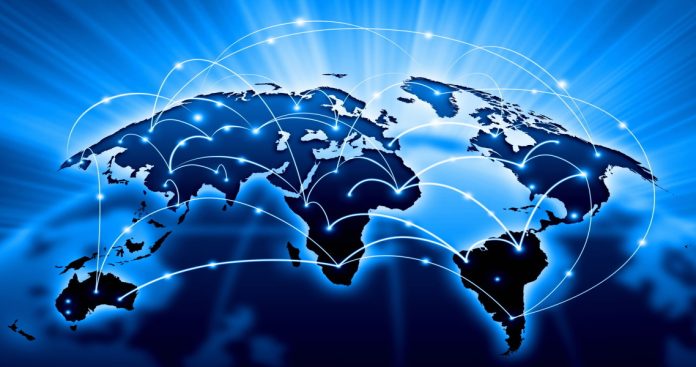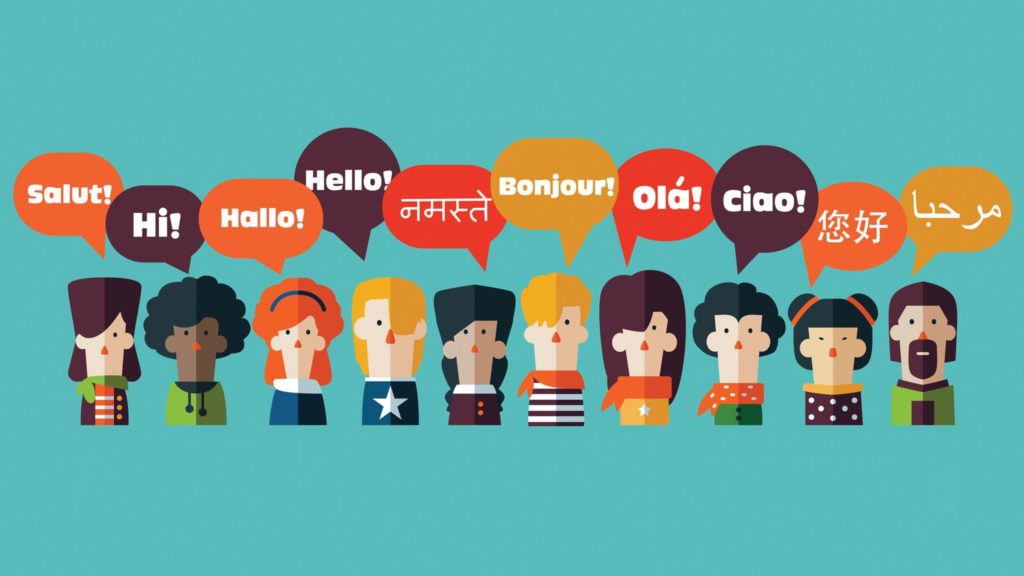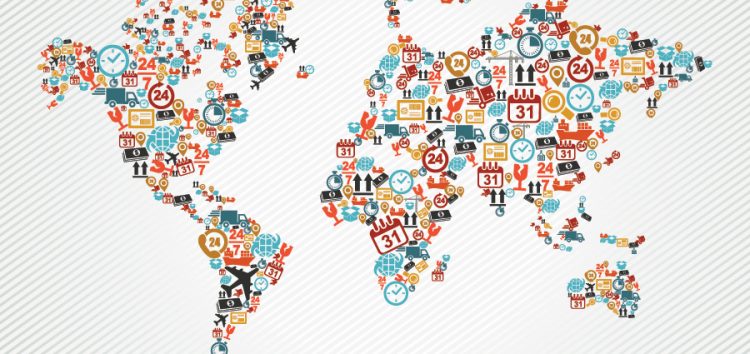
In a world where everyone is told to “Think Globally, Act Locally”, the terminology can get confusing. Imperatives like “Globalize” and “Localize” are thrown about, often interchangeably. But are they the same, merely two sides of the same coin? And how does “Internationalize” fit in? Is it the same as globalizing, or does it have a more specific meaning? We’ll address the distinctions among these three terms, so those of us charged with educating about “going global” can correctly explain where we’re going.
Defining Terms: Perspectives from a Translation Services Professional

A whole industry appears to be in a state of confusion about these definitions.
According to Ofer Tirosh, CEO of Tomedes, a provider of professional translation
services, even practitioners of these terms are often inexact. In summary, he says,
“Globalization is the process of expanding your foreign markets, internationalization is
preparing your infrastructure for that change, and localization is the process of creating
local versions of source content.”
So globalization is reflected in multinational corporations seeking to reach new markets while preserving brand identity. The internet itself is both a product and a progenitor of globalization. Similarly, computers and smartphones connect us. Any significant brand operating in multiple countries has a globalization strategy, and the biggest has a plan for virtually every considerable language and locale. Google Translate app for Android and iOS supports more than 100 words. It can translate for 37 languages via photo, 32 via voice in “conversation mode,” and 27 via live video imagery in “augmented reality mode.”
Globalization: Beyond the buzz to understand what’s happening here

If we want to learn and teach what globalization is all about, we need to start with economic motivation. The cost to create original content, as a rule, is far higher than to adapt existing material to additional markets. For content creators and publishers, as well as app developers and other software providers, that creates huge incentives to “globalize” – to extend one’s marketing reach to additional countries and regions. The cost-per-locale of adapting content is not linear but diminishes as more locations are languages. Notice that we used “cost-per-locale” rather than “cost-per-language” – this due to the need to differentiate per locale rather than just per language.
So globalization is reflected in multinational corporations seeking to reach new markets while preserving brand identity. The internet itself is both a product and a progenitor of globalization, as are the computers and smartphones which bring the connected world into our homes and our hands. Any significant brand operating in multiple countries has a globalization strategy, and the biggest have strategies for virtually every significant language and locale. Google Translate app for Android and iOS supports more than 100 languages and can translate for 37 languages via photo, 32 via voice in “conversation mode”, and 27 via live video imagery in “augmented reality mode”.
Netflix makes do with a couple of dozen languages to support its 150 million subscribers worldwide.
Apple products support 20-30 languages, as well as several variants of English and Spanish and Chinese.
IKEA recently switched to Noto typeface, supporting some 800 languages, but many of its products have assembly instructions with just graphics and diagrams, no language
These examples point to the fact that while globalization calls for supporting many languages, language support and localization generally does come at a cost. So there is intense competition to reduce those costs through various products and services.
Internationalization: What is done to prepare content to be localized

Internationalization – the word is so long and unwieldy that some insiders shorten it to i18n (the numbers of characters it contains) – can generally apply to any preparation for the international market. But in recent decades, the focus has been on technological developments. These include taking into account:
Hardware support: Software designers need to consider that some kinds of devices may not be available in all locations, or greatly varying distributions
Data encoding: While ASCII character encoding suffices for a Western European language, internationalization generally means moving to Unicode formats (UTF) which support non-Latin characters, including Right to Left languages
Number support: Software and electronics must be designed to accommodate varying date and time formats, numerical formats, and currency formats.
User interface: The UI must be designed in a manner flexible enough to accommodate all languages to be supported
To sum it up: software and hardware need to be internationalized before they are localized.

Localization: Where the Global Rubber Meets the Local Road
The goal of globalization, and the preparatory work of internationalization, is all designed to read content to be localized. What is localization? It is the adaptation of content for a particular location. It may sound simple, but it’s far from that. Sure, language and dialect are essential factors, but there’s much more to it. All the items in hardware and software — in sales, marketing, and technical documentation — that were internationalized now need to be reduced to decisions relevant to a given locale.
Localization software has been created to manage this process so that all critical components in localizing a mobile app or other product can be easily added to a locale-specific database rather than writing new code to accommodate location differences. Things are far too complicated for a human translator to translate from Chinese to English on a one-off basis. There is mostly an array of data for every piece of text. When a new location is selected or detected, the software adapts and updates to render the interface.
That includes the nuances of language, but also measurements, dates, currencies, punctuation marks, naming conventions, signs, and symbols, not to mention legal requirements, local regulations, and much more. Typically, localization software is a business-to-business product targeted at software developers and translation companies that seek to expand their repertoires to the software.
Found in Translation: At Your Service to Prepare to Go Glocal

For educational, professional, and publishing communities who typically have more limited needs than localizing for several dozen regions, the typical (and more economical) recourse is to turn to localization service providers and translation companies that have taken on restricting as a specialization. They can best make sense of your specific needs.
It is to be hoped, though, that at least our clarification of these three broad categories — globalization, internationalization, and localization — are at least bit clearer now. The terms are linked as part of a game in which we are all players. It’s not global vs. local: it’s all the same worldwide ecosystem. In this sense, we’ve all gone glocal.
















